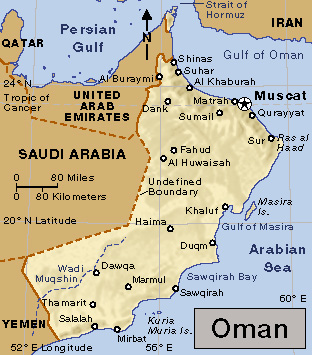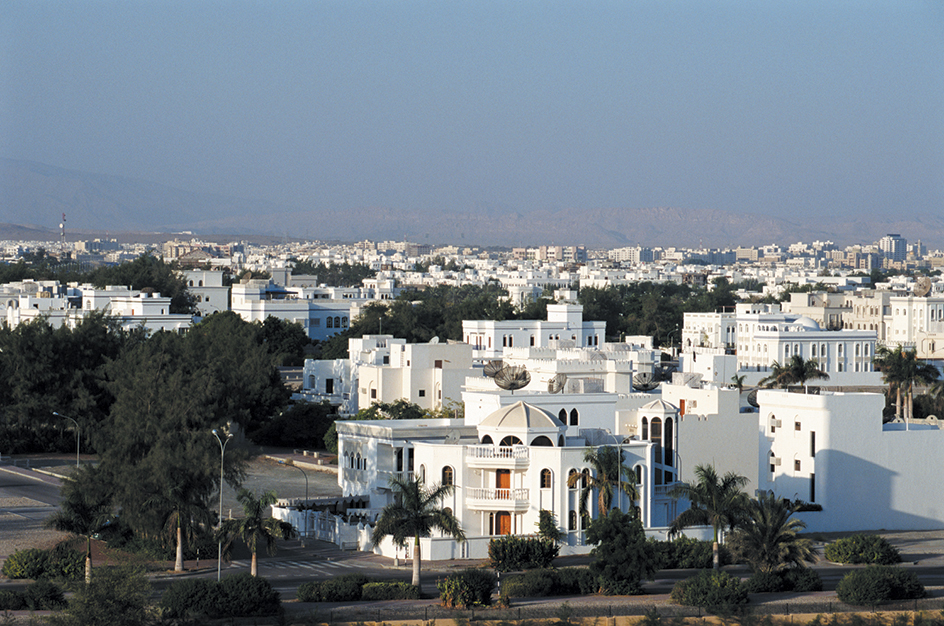Muscat << MUHS kat >> (pop. 30,000; met. area pop. 250,000) is the capital of Oman. It lies on the country’s northeast coast, along the Gulf of Oman. Muscat, also spelled Masqat, became Oman’s chief seaport and trading center in the 1500’s. In the early 1970’s, the main port and trade activities were shifted to the nearby suburb of Matrah. Muscat is important because of its location on the Gulf of Oman, the route for oil tankers leaving the Persian Gulf. Two Portuguese forts that date from the late 1500’s and the palace of the sultan of Oman, built in the 1970’s, dominate the city. Muscat has many old, one- and two-story whitewashed buildings. Most of the people work in commerce or for the government.

Muscat and its more modern suburbs are called the Capital Area. The Capital Area is a booming district that includes an international airport, an oil tanker loading zone, military bases, and a deepwater port. Muscat dates from ancient times. Portugal controlled Muscat from about 1507 to 1650.

